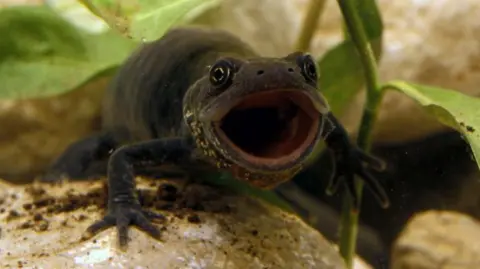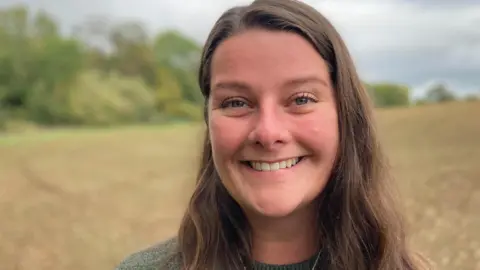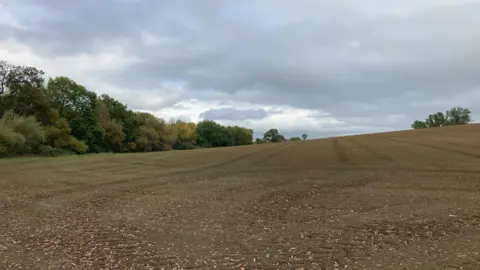New habitat bank aims to bring greater biodiversity
 Getty Images
Getty ImagesA company behind a "habitat bank" the size of 50 football pitches says it hopes the reserve will end "compromised meaningless ecological enhancements" on developments.
Fields close to the village of Greatworth, near Brackley, Northamptonshire, are being turned into meadows, wetlands and woodlands and will be managed by Environment Bank.
Last year, biodiversity offsetting was introduced into the planning process across England.
Matt Dodds, associate ecologist for Environment Bank, said: "It's basically building nature reserves, funded by development, to ensure that development doesn't leave nature in a worse state."

The 85-acre (34 hectare) reserve is part of a national scheme which allows developers to buy "biodiversity units" to meet a planning requirement to offset environmental harm.
To gain planning permission, developers must demonstrate a 10% net gain in biodiversity.
Mr Dodds said: "I worked in a local planning authority for many years and you see a lot of compromised meaningless ecological enhancements on site.
"This is by far a better solution because you're taking small impacts on development sites and then pooling them to a big resource."

It is hoped the habitats will attract great crested newts, reptiles such as grass snake, slow worms and bats.
Principal ecologist Rachel Russell said: "A lot of these habitats, ancient woodland and things, they are irreplaceable and they're really hard to recreate, which is why it's so important that we do, and biodiversity net gain provides a mechanism to at least try to do that, granted we've only got the 30 years."

As a public footpath crosses the site, Rory Hodgson, the national land acquisition lead at Environment Bank, said signs would be erected to explain what was happening.
"This habitat bank is just adjacent to a local village and it's a popular dog walking route and so we're incorporating that public right away into our design so that the public can really see and enjoy what we're trying to create," he said.
The "low-value" arable fields were within a mile of several wildlife sites and close to the Helmdon disused railway Site of Special Scientific Interest and Farthinghoe nature reserve, according to the company.

Work on a habitat bank is also under way in Weedon Lois by a different company Maydencroft Limited, while Environment Bank is developing sites in Corby and Thrapston.
A Natural England spokesperson said it was "committed to the recovery of nature, which is in rapid decline, and supporting the government with the implementation of statutory biodiversity net gain is part of this ambition".
"The introduction of statutory biodiversity net gain has stimulated new creative solutions such as new habitat banks like this one," they said.
Follow Northamptonshire news on BBC Sounds, Facebook, Instagram and X.
